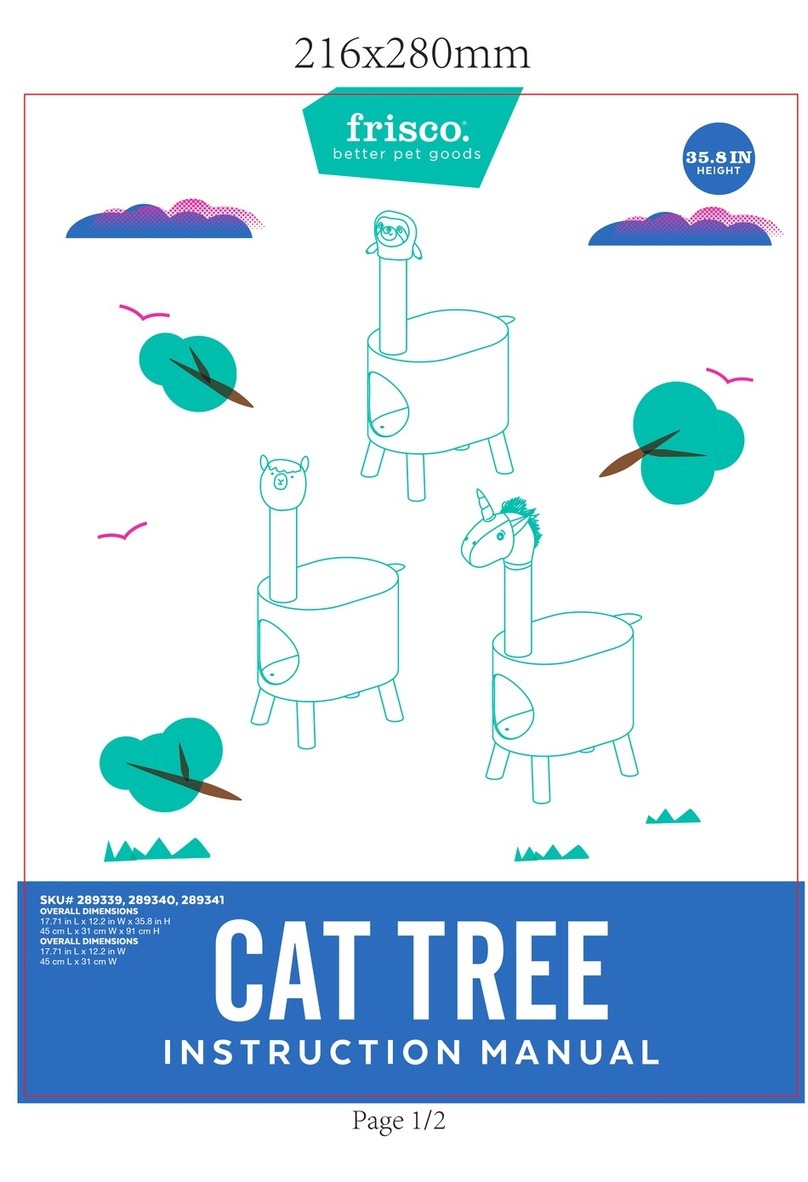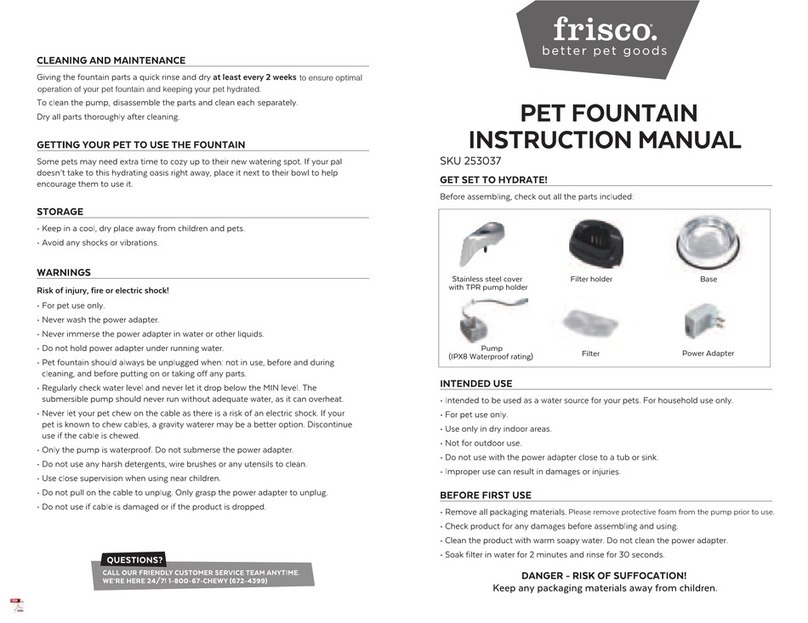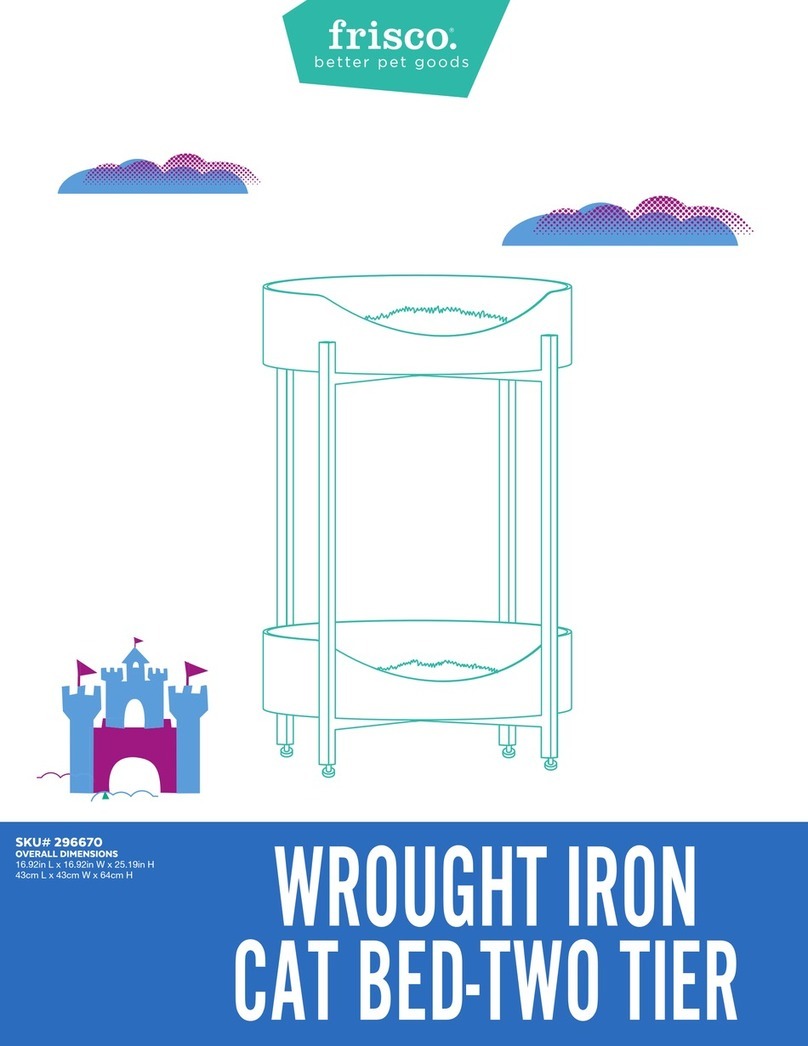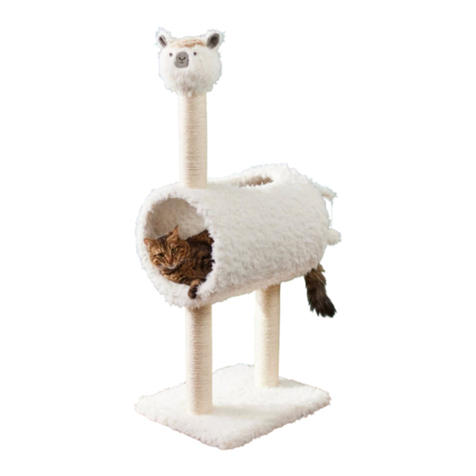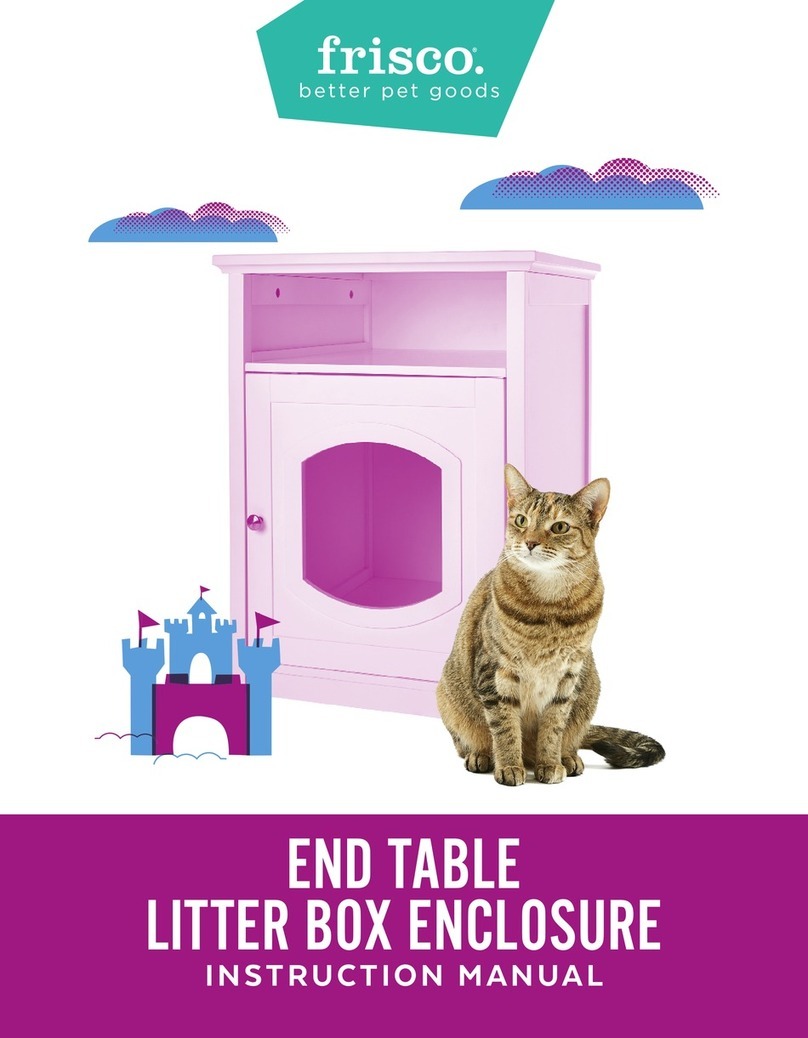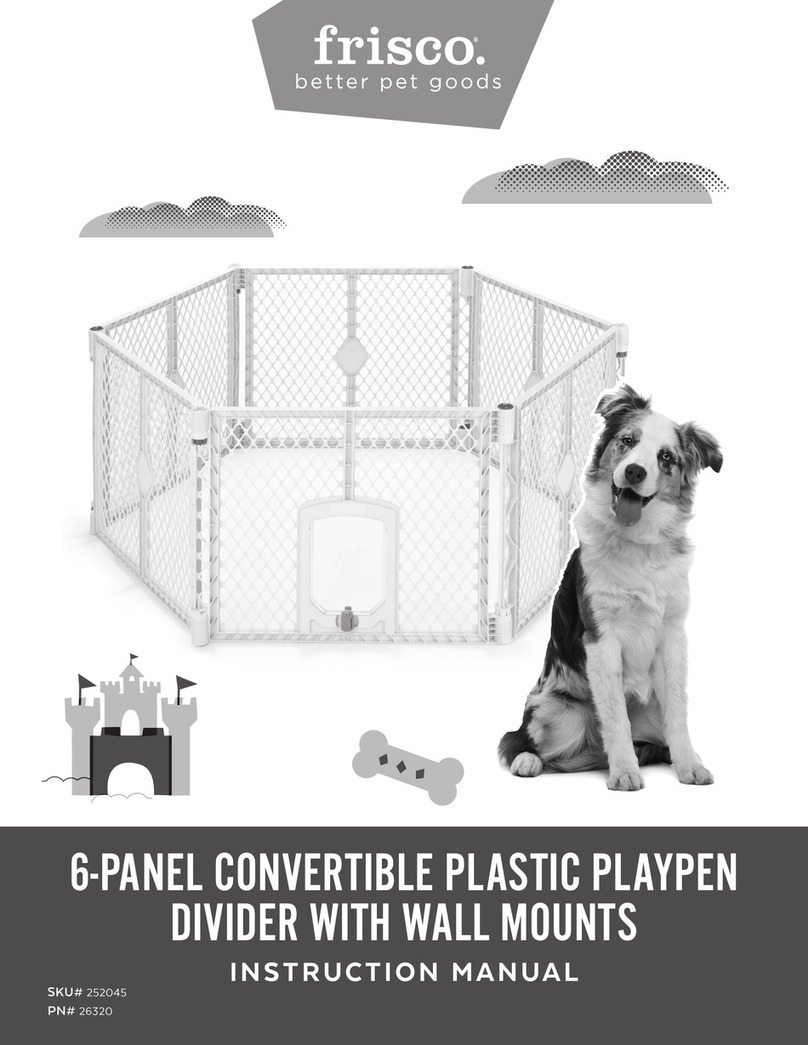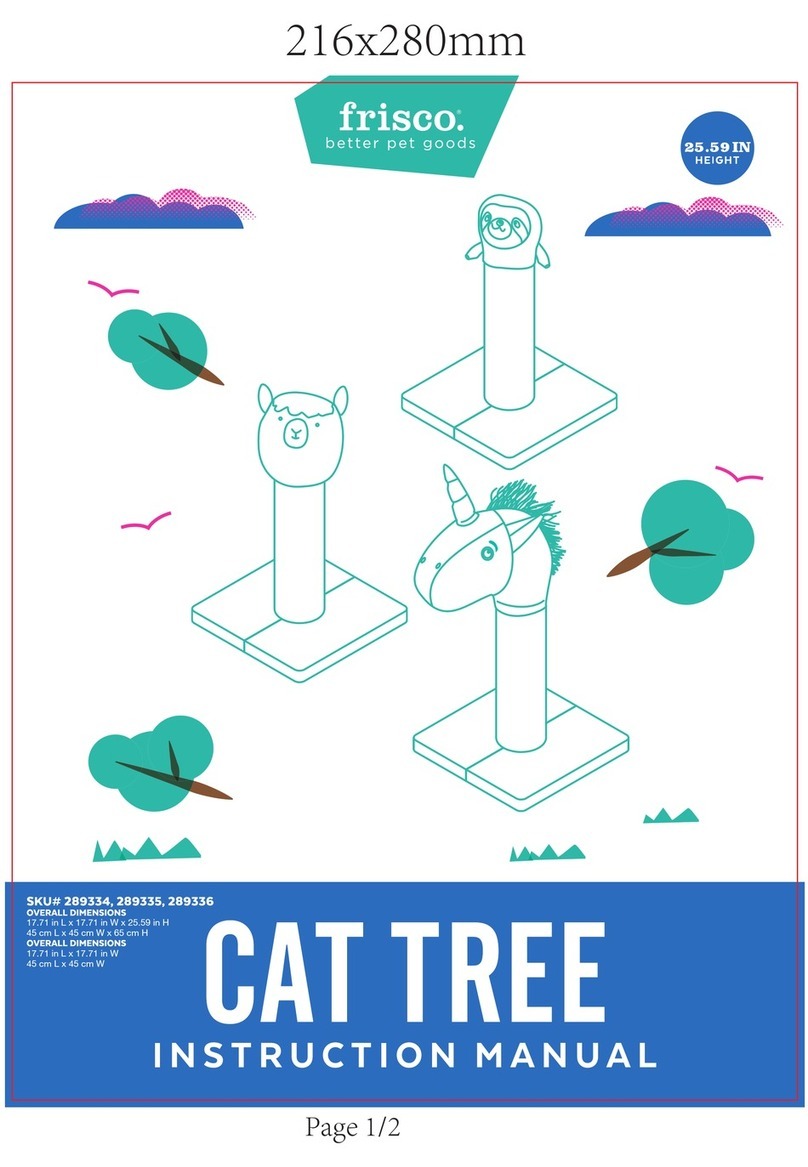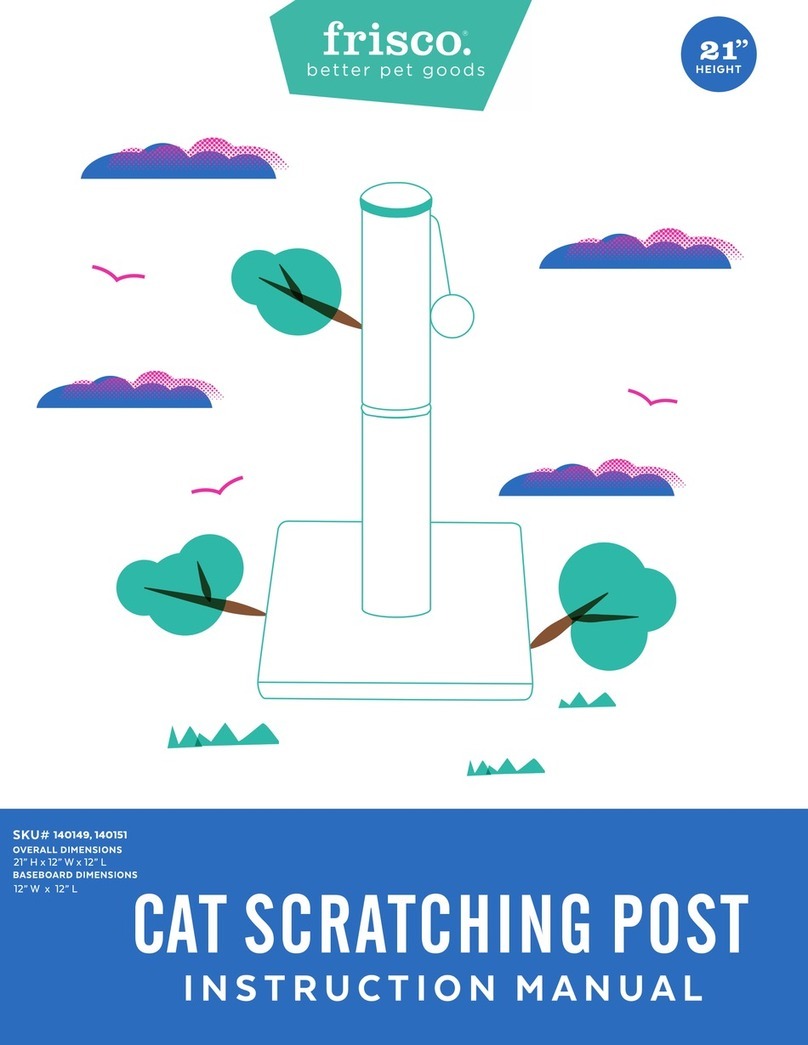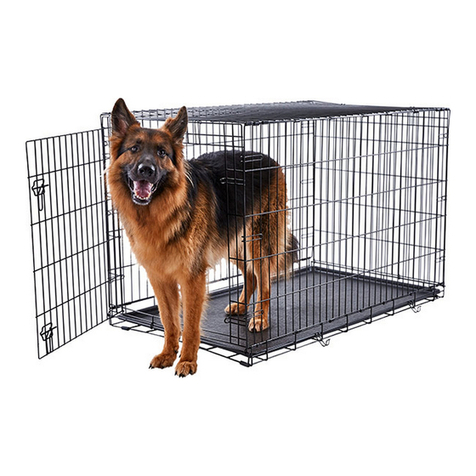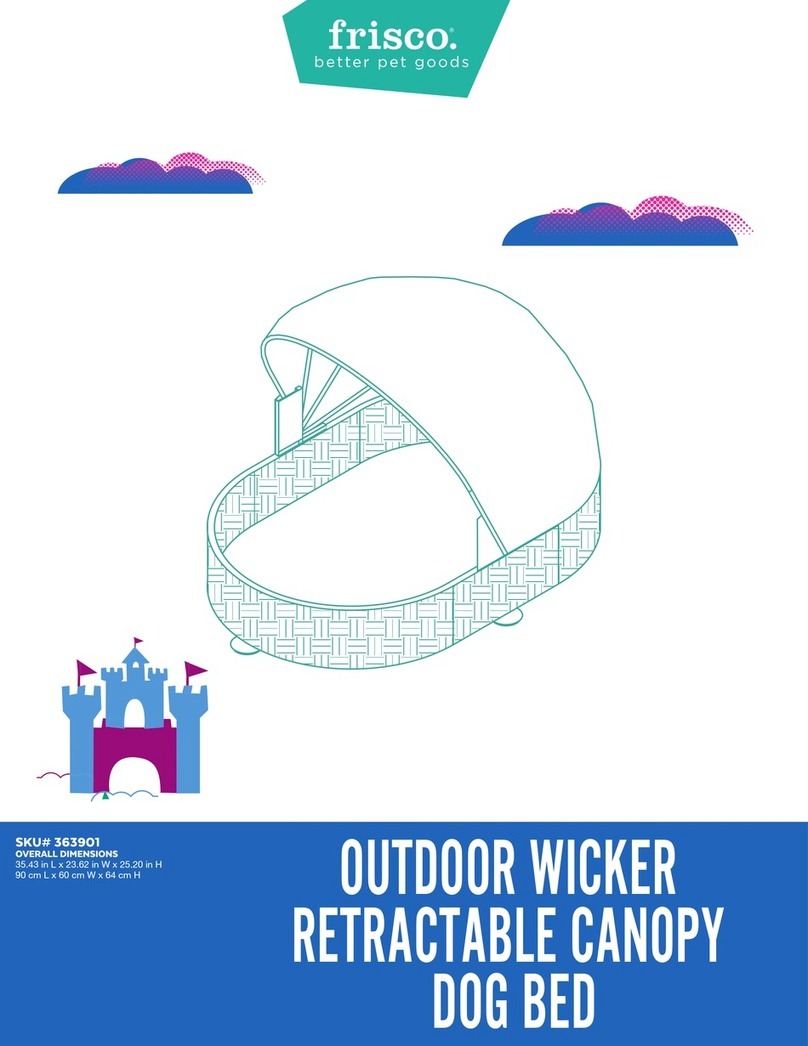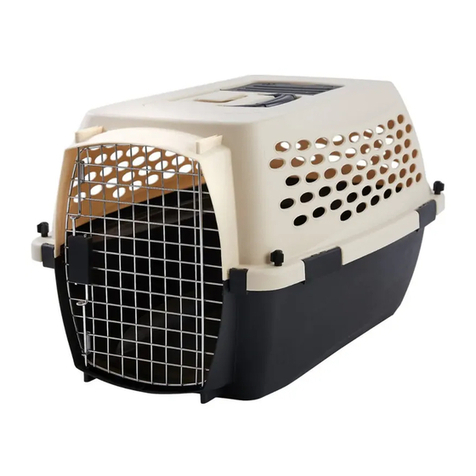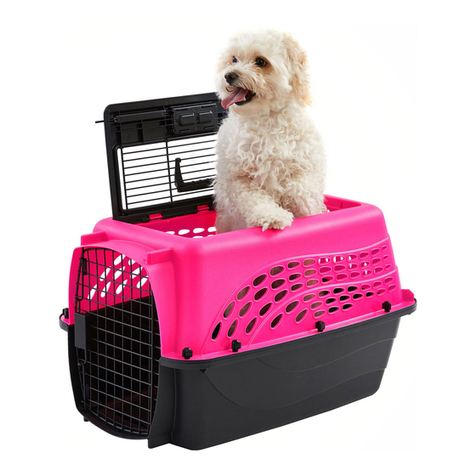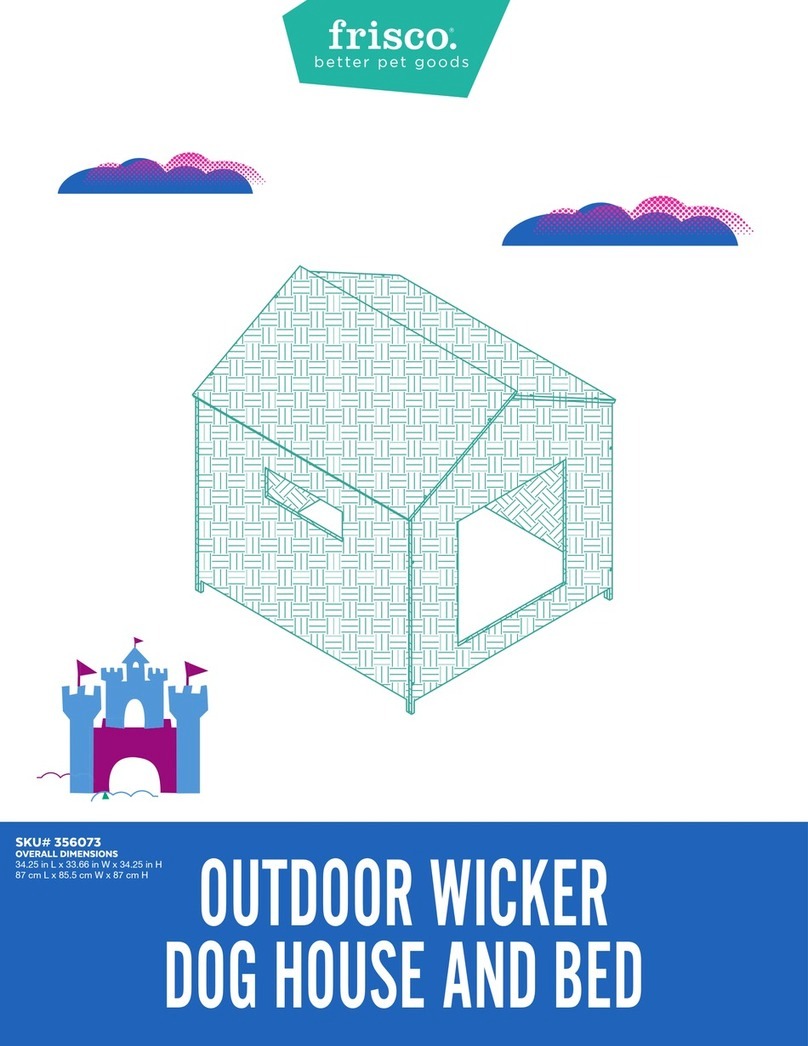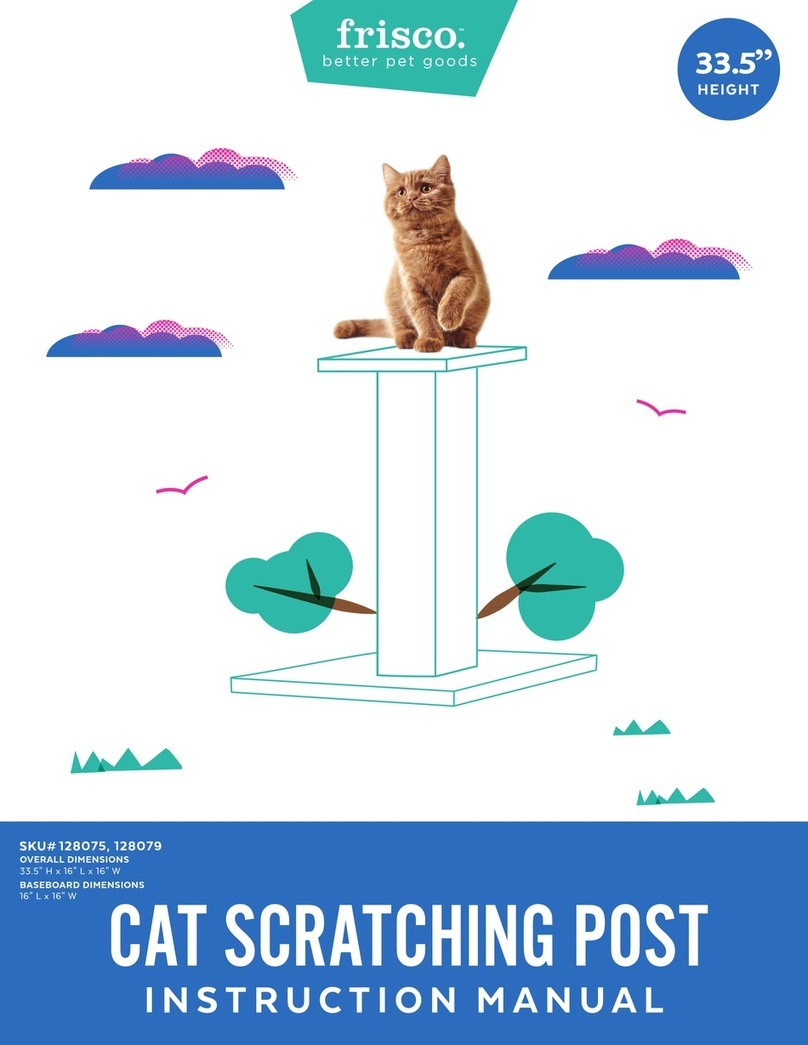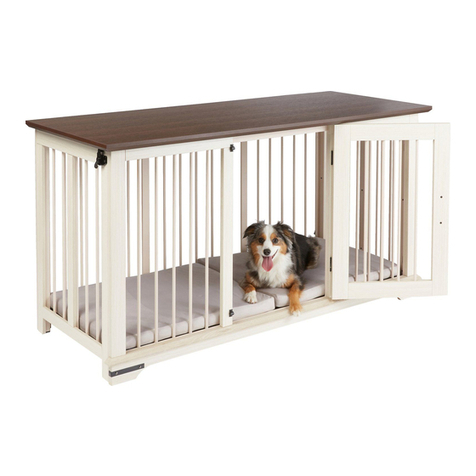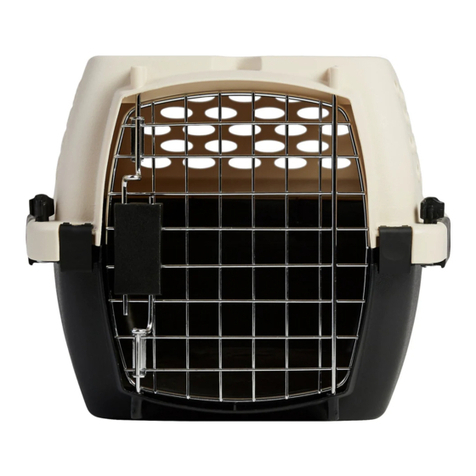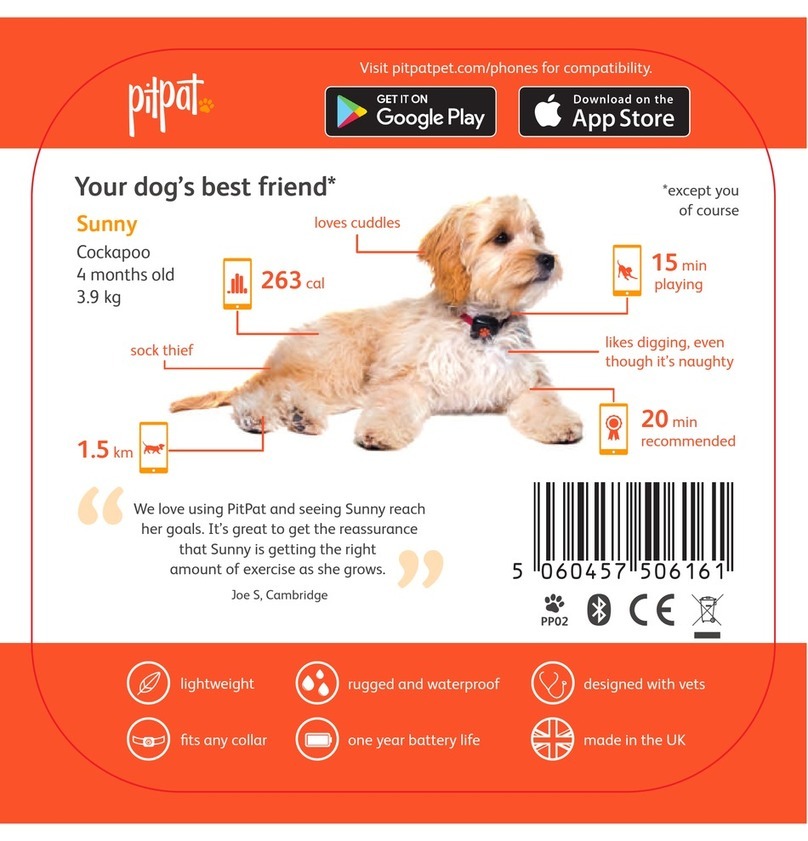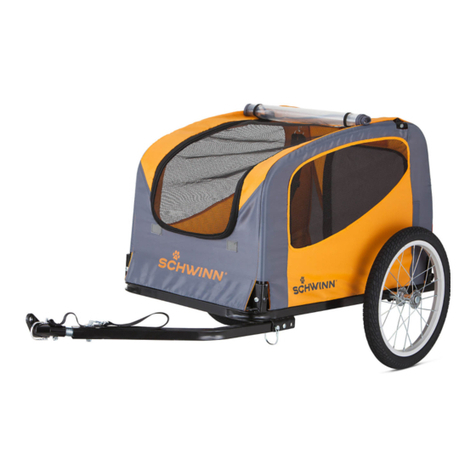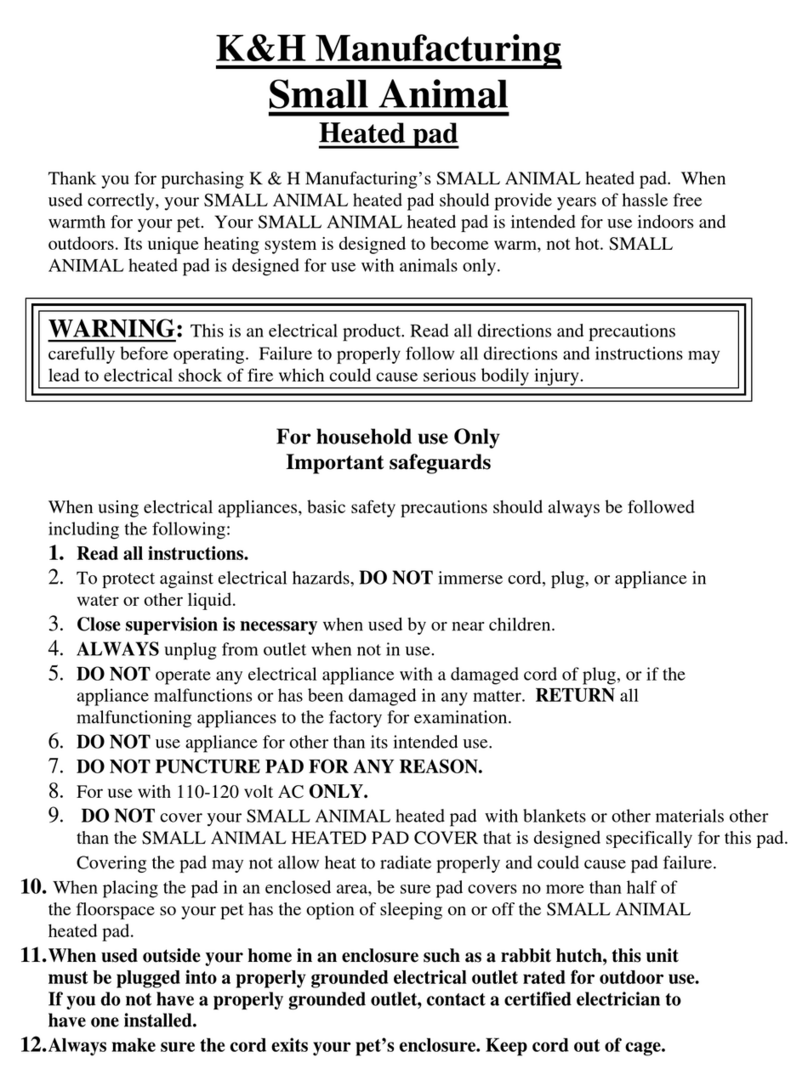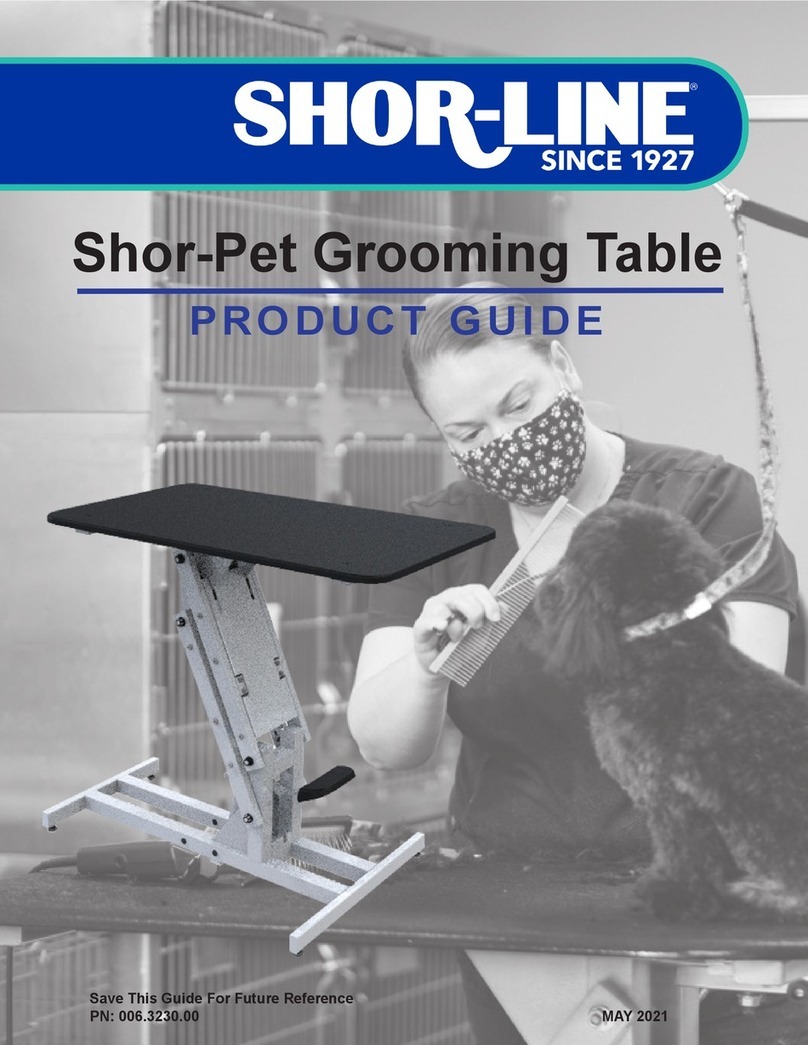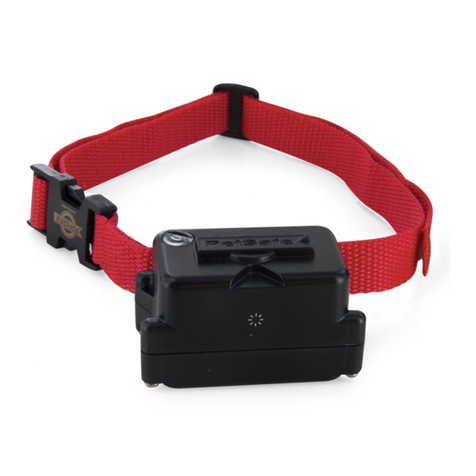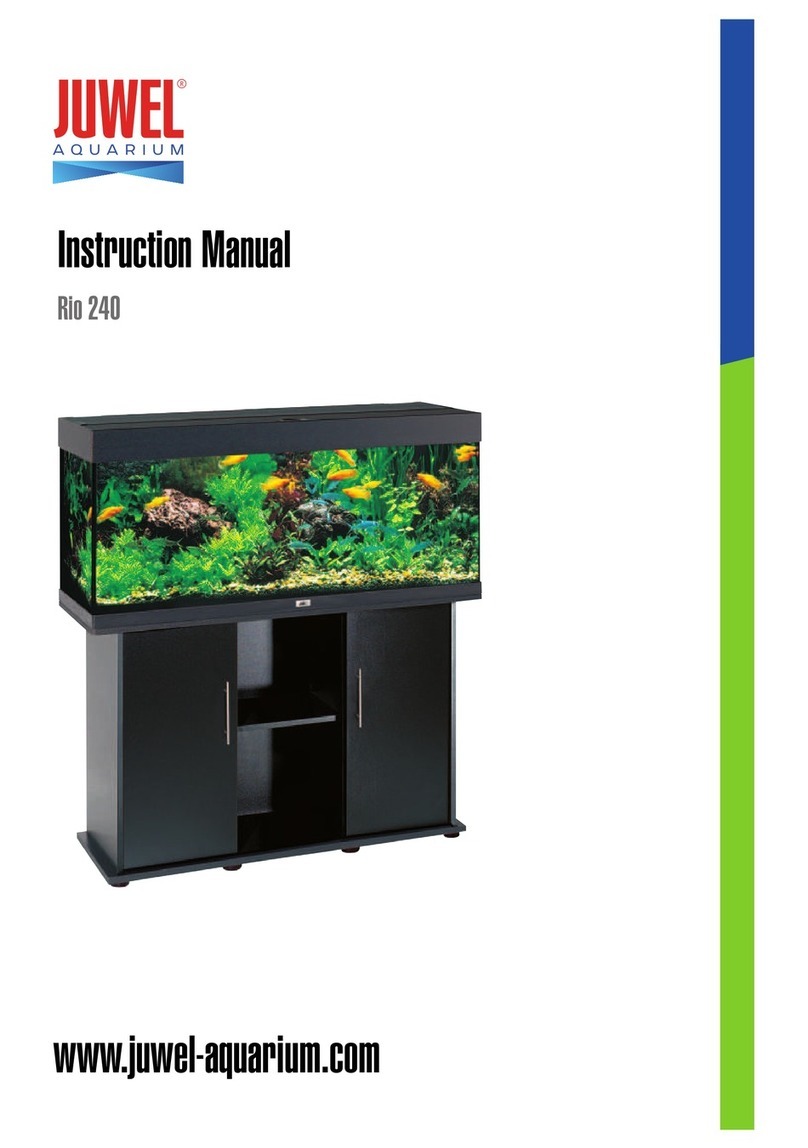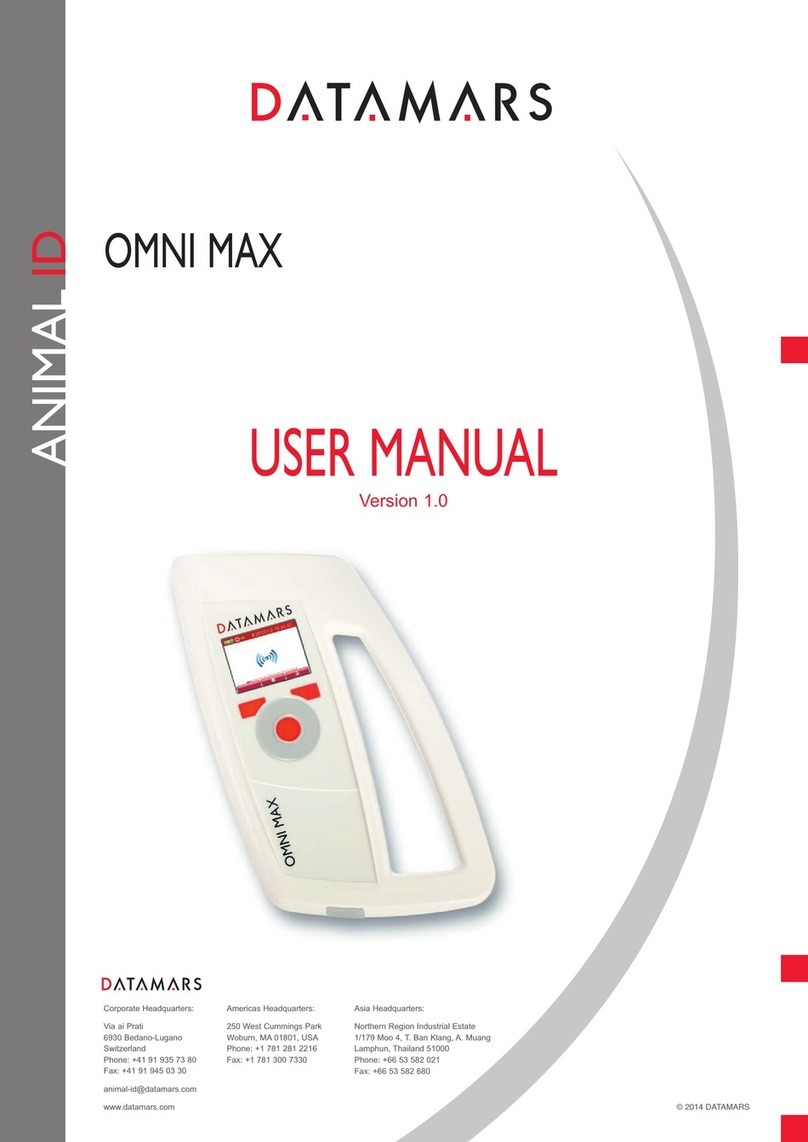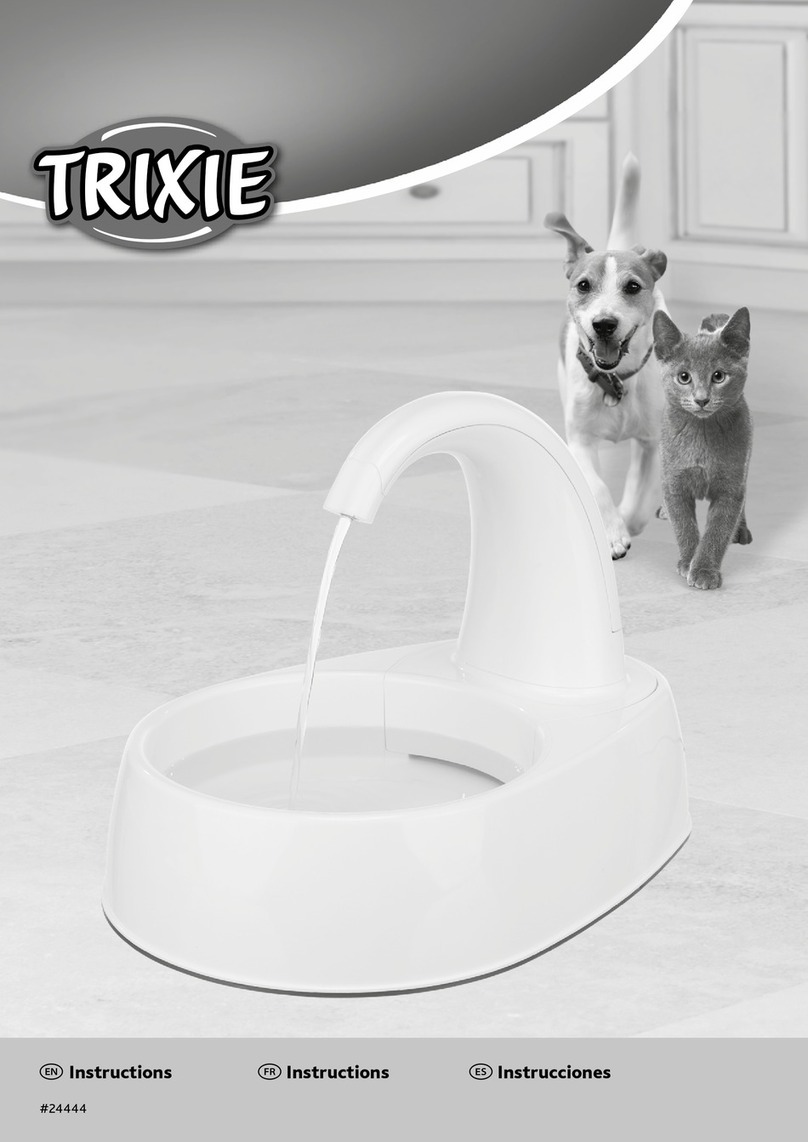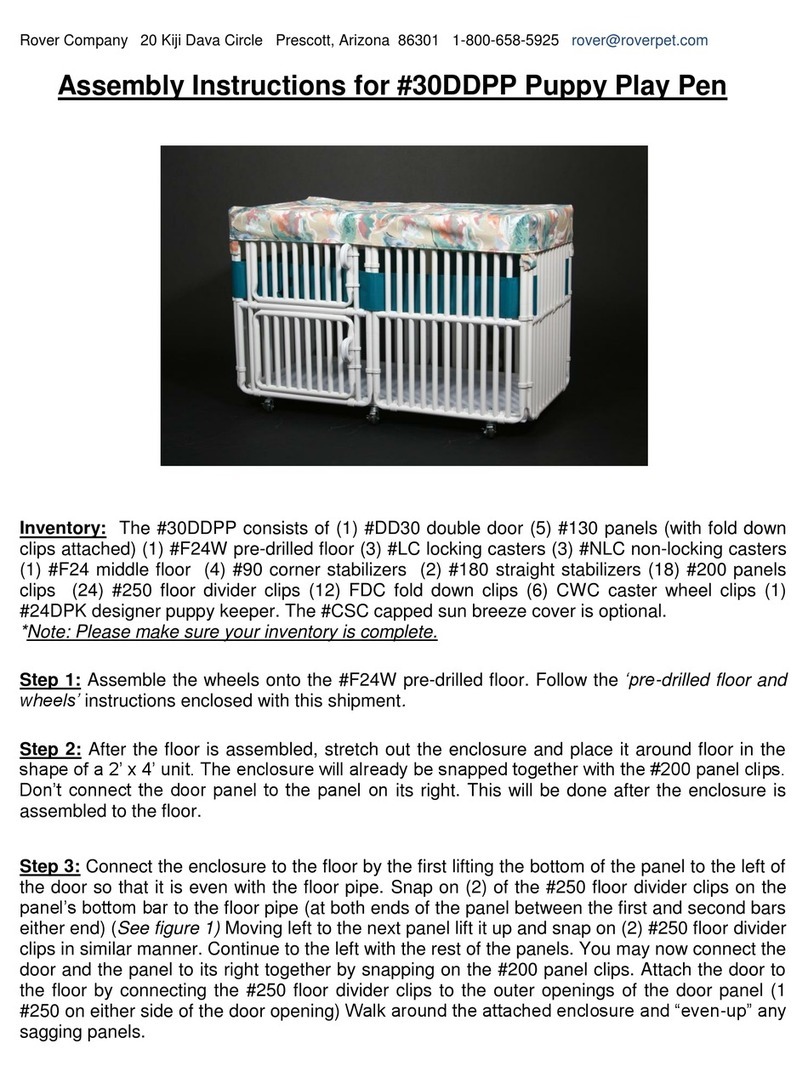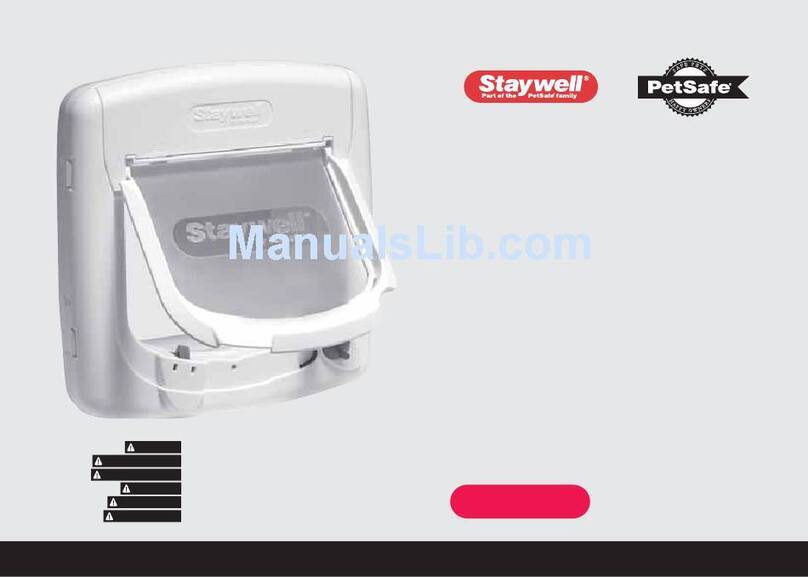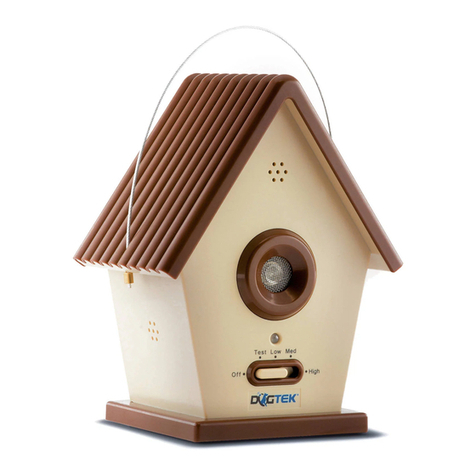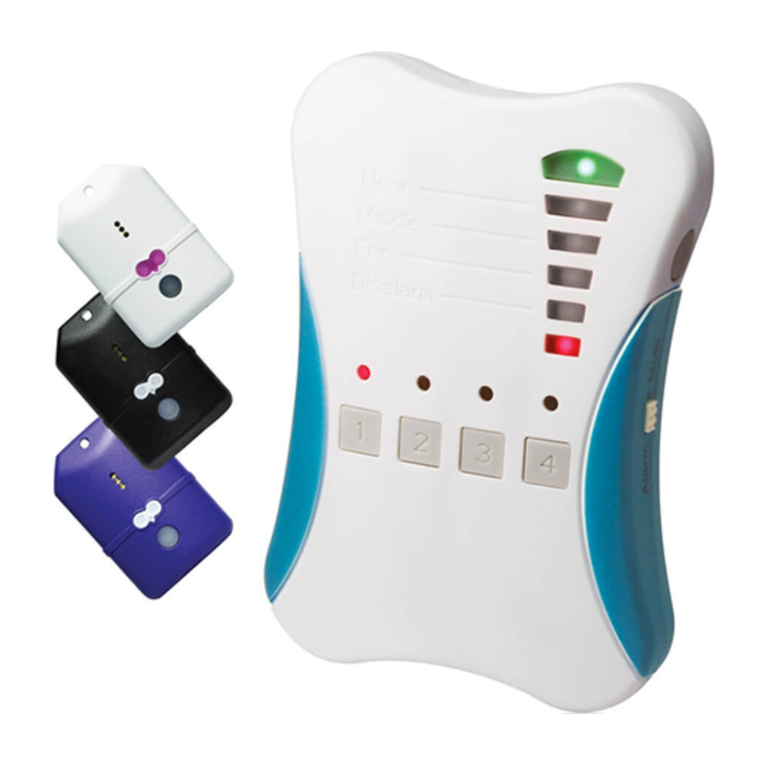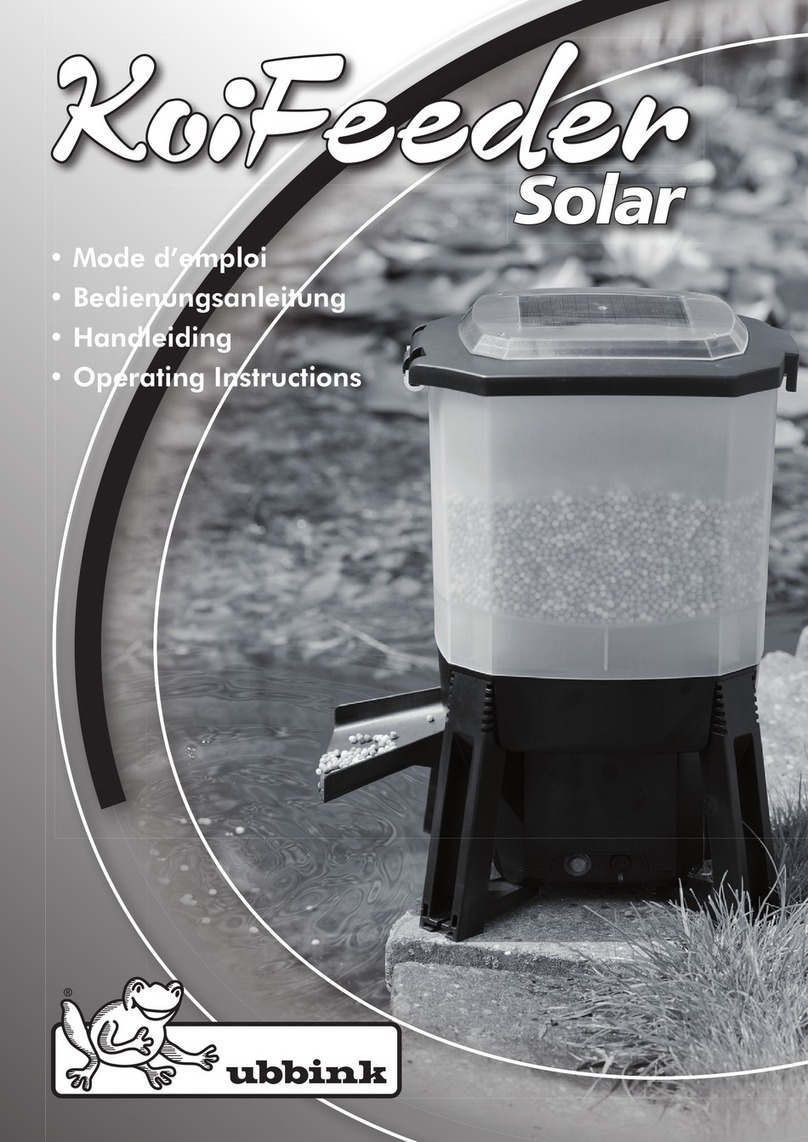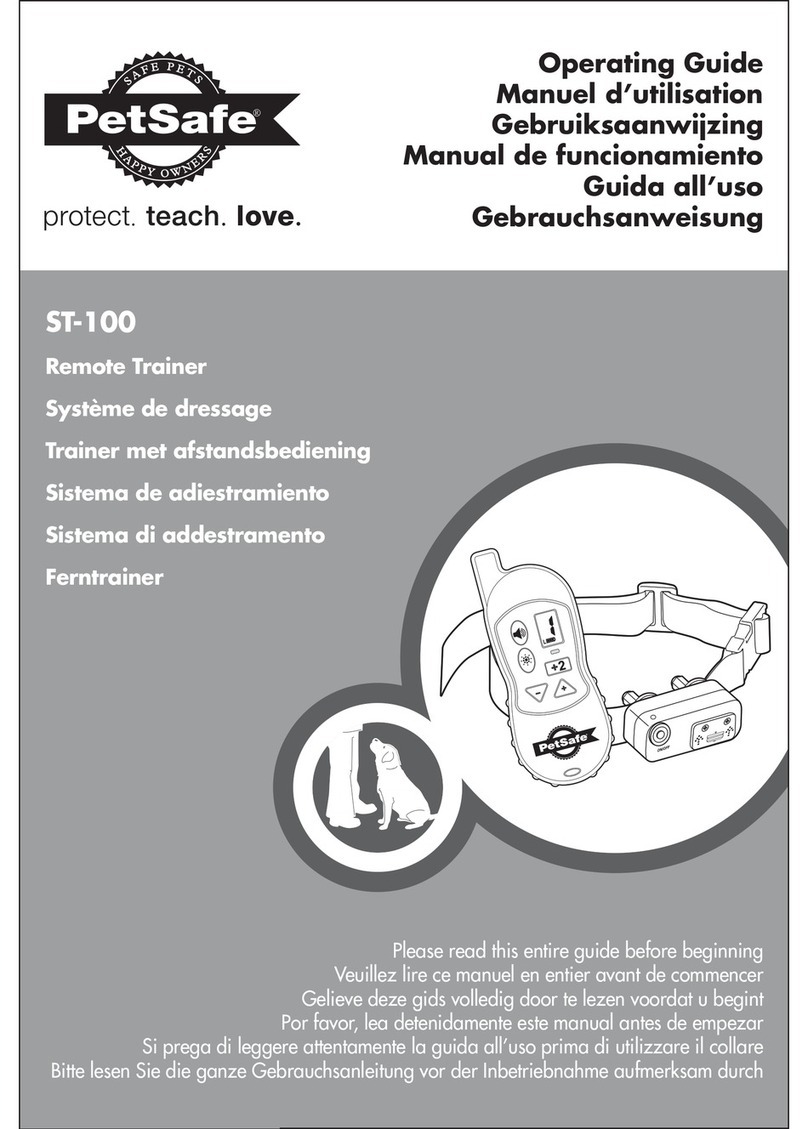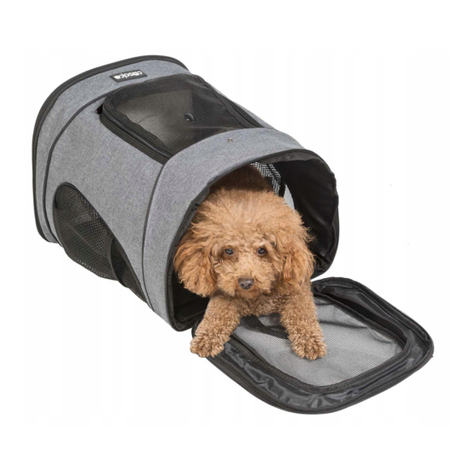
For questions, please call 1-800-672-4399.
• To prevent choking and other serious injuries, always remove any collars, tags or
leashes from your pet before placing him in his crate.
• You can transport your pet in his crate for short distances inside the home, but not
for long distances. Please use a carrier specifically designed for the purposes of pet
long-distance transport.
• This crate is not designed to restrain aggressive breeds of dogs who may thrash and
launch themselves inside the crate. Consult your veterinarian for recommendations
on restraining aggressive pets.
• Before your pet enters his crate, make sure that it’s secure. Double-check that the
crate is properly assembled, all screws are tightened, and all locks are secure before
leaving your pet inside his crate.
• It’s never a good idea to leave your pet inside his crate for too long. Remember, pets
need time to socialize, exercise and go potty! Consult your veterinarian or trainer to
determine the appropriate amount of time that your pet can safely and comfortably
be left in his crate.
• Make sure that your dog’s paws are large enough that they won’t slip through
the bars in the floor panel.
• Always be sure your pet has enough food and water before leaving him in his crate.
• Consult your veterinarian about whether it’s safe to leave food, toys or other items in
the crate with your particular pet. They all have unique personalities and habits, so
what works for one might not work for another.
• Never place multiple pets into one crate.
• Never use the crate without its metal tray properly fitted and secured, and be sure not
to place your pet into a crate with a damaged tray.
• Please, never allow your children to play in, on, or around the crate.
• We know how excited pets can get, but do be sure to make sure his paws, snout, ears
or tail aren’t in the way of the door hinge or latch. Ouch!
• Never place your pet’s crate in direct sunlight or store your crate outside or in a car,
because the metal can become very hot. Never leave your pet in a closed car on a hot
day. Serious heatstroke or death could result from an overheated pet.
• While we are dedicated to providing the best for your pet, Chewy, Inc. is not
responsible for any loss, damage, discomfort, injury, illness, death or costs of any kind
as a result of or by use of this crate.
CRATE TRAINING TIPS
WARNINGS AND CAUTIONS
We care about the safety of your pet, so please READ AND FOLLOW ALL INSTRUCTIONS before using a new crate.
Improper use may result in serious injury or even the death of your pet.
INTRODUCTION
Introduce your pet to his new home. Let him explore it first – on his
own time. Don’t force him or rush the process. Remember, you want
your pet to think of his crate as a positive, safe space of his own, so let
his natural curiosity lead. If he seems reluctant, entice him to explore
by putting his favorite toy inside.
TIME
Acclimate him to it slowly. Once your pet is comfortable, get him used
to the idea of staying in his crate little by little. At first, keep him inside
the crate by sitting or standing in front of the open door while talking
soothingly. Do this for a short amount of time, then gradually increase it.
Eventually, close the door, leaving it closed for a short duration, increasing
it gradually. Praise him and reward him with treats each time. Remember,
positive associations!
DENNING
Appeal to your pet’s instinct as a denning animal. Help him associate
his crate with a den (or a castle) of his own by creating the safe space
where all his basic needs are met. And make it comfy for him by
placing a towel, bed or blanket at the bottom.
BATHROOM
Take him out for regular potty breaks. Wild animals don’t do their
business in their dens. Reinforce this natural instinct in your pet by
taking him outside, away from his “castle” to do his business. And
do it regularly. Younger animals especially need to be let out more
frequently.
POSITIVE ASSOCIATION
Never put your pet in his crate as punishment. That creates negative
associations and will make him reluctant to use it.
PROFESSIONAL HELP
Always consult your veterinarian or trainer with specific questions for
crate training your pet.
WEIGHT RECOMMENDATIONS
For your pet’s safety, please follow the recommended weight limitations for each crate model. Never use a crate for a pet that
exceeds the maximum stated weight.
MEDIUM 36 in (36in x 24.5in x 26.5in) (91.4cm x 62cm x 67cm) 41 to 70 lbs (18.6-31.8 kg)
LARGE 42 in (42in x 28.5in x 30in)(106.7cm x 72.4cm x 76.2cm) 71-90 lbs (32.2-40.8 kg)
X-LARGE 48 in (48in x 30.5in x 32.5in)(122 cm x 77.5cm x 82.6cm) 91-110 lbs (41.3-49.9 kg)
NOTE: The floor grid is designed to support one puppy up to 30 lbs.
MAINTENANCE
To provide your pet with the most comfortable “castle” possible, clean his crate routinely with a mild, non-toxic cleaner and water.
FINAL ASSEMBLY CHECKLIST
Before introducing your pup to his new castle,
remember to double-check the following:
• Check that the side panels are resting inside
the base of the crate.
• If you aren’t using the divider panel, make
sure it is removed from the crate.
NOTE:
• Never put your pet into his crate without the pan in place or the
pan-locking latch engaged.
• Please do not attempt to remove or reinsert the pan in any other
way than the one described here or it may break or be damaged.
• Never remove or replace the pan while your pet is in the crate.
To order a replacement pan, call 1-800-67-CHEWY or visit www.chewy.com.
